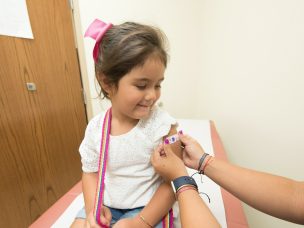Pediatrics
Immunization Against Respiratory Syncytial Virus
With the recent approval of the monoclonal antibodies palivizumab and nirsevimab and their encouraging results from a current phase III maternal immunization trial, respiratory syncytial virus morbidity and mortality will likely be significantly reduced. Respiratory syncytial virus (RSV) causes most lower respiratory tract infections (LRTI) in children and accounts for over 3.6 million hospital admissions...
Respiratory Syncytial Virus-Load in Acute Bronchiolitis
Respiratory syncytial virus and other possible non-viral variables may contribute to the clinical severity of bronchiolitis in hospitalized infants. Respiratory syncytial virus (RSV) is an enveloped RNA virus that is primarily responsible for causing acute bronchiolitis. This viral infection leads to inflammation, characterized by swelling, excessive mucus production, and damage to the epithelial cells. Infants...
Predictors of Influenza and Respiratory Syncytial Virus Diagnosis in Children
In a population of urban children, age was a significant predictor of respiratory syncytial virus and influenza diagnoses. Children frequently contract respiratory viral infections, such as influenza and respiratory syncytial virus (RSV). Their immature immune systems make them more susceptible than adults to these infections. As a result, several variables raise the risk of contracting...
Probiotics: A Potential Ally Against Children’s Eczema
Evidence suggests single-strain probiotics, particularly lactobacilli, may help reduce symptoms of atopic dermatitis, a common type of eczema, in children. This article explores an analysis of the latest scientific findings and how these beneficial bacteria may act as a supportive treatment for skin health. Certain single-strain probiotics, notably lactobacilli and others, can help reduce the...
Associations Between Serum Per- and Polyfluoroalkyl Substances and Asthma Morbidity
This study demonstrates the association between greater odds of asthma attacks in the previous 12 months and higher concentrations of PFDA and PFOA in the serum, which was significant for individuals aged 12 to 18 years. Per- and poly-fluoroalkyl substances (PFAS) are chemicals widely utilized in manufacturing and tend to be highly resistant to degradation;...
Preterm Birth, Low Birth Weight Linked to Lower Incidence of Fracture
Very preterm newborns, those with low birth weight had lower incidence of fractures during mean follow-up of 10 years. Very preterm infants and those with low birth weight have a lower incidence of fractures during childhood, according to a study published online May 23 in the Journal of Bone and Mineral Research. Ilari Kuitunen, M.D., Ph.D.,...
Length of Stay Disparities in Pediatric Asthma and Other Conditions
Length of stay is one way to measure how severely an illness affects a population. This study analyzes length of stay disparities in several pediatric illnesses, including asthma. Inequities in the quality of care for pediatric illnesses have historically impacted marginalized races and ethnicities in a negative way. Among the many metrics that can be...
Efficacy of Sublingual Immunotherapy in Allergic Rhinitis
The severity of allergic rhinitis in pediatric patients is markedly reduced by administering sublingual immunotherapy by decreasing levels of type 2 innate lymphoid cells (ILC2), ILC2-related cytokines, and their transcription factors in the bloodstream. Allergic rhinitis (AR) is a widespread immunological disease of the nasal mucosa among children and adults characterized by watery nasal discharge,...
Adverse Childhood Experiences Common for Teens Before, During COVID-19
Those with four or more ACEs by the fall of 2020 had 2.71-fold increased likelihood of reporting a new ACE in spring of 2021. Adverse childhood experience (ACE) exposure was common before and during the pandemic, and new ACEs were more likely among those who had multiple ACEs before or early in the pandemic, according...
More Medical News














